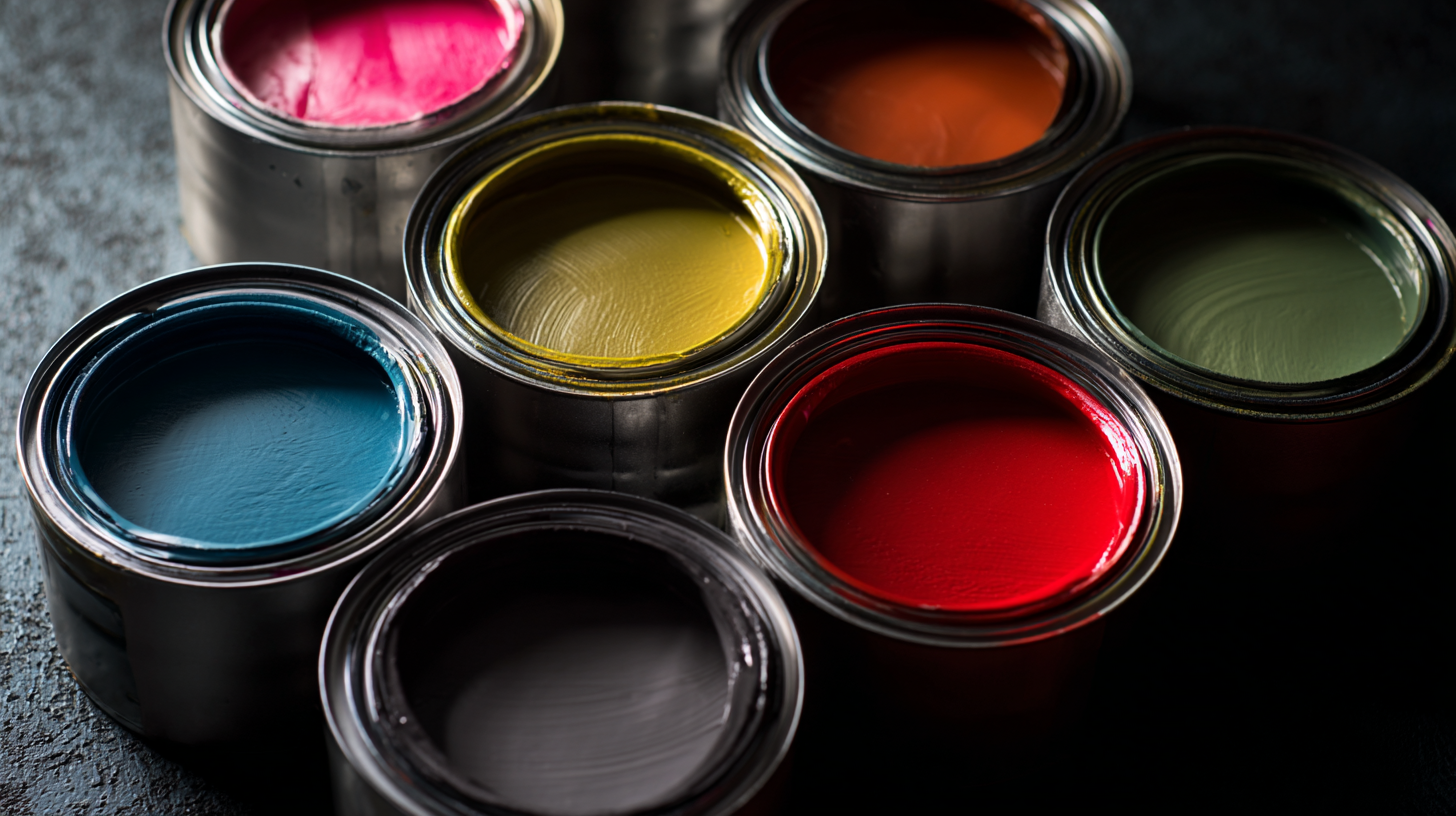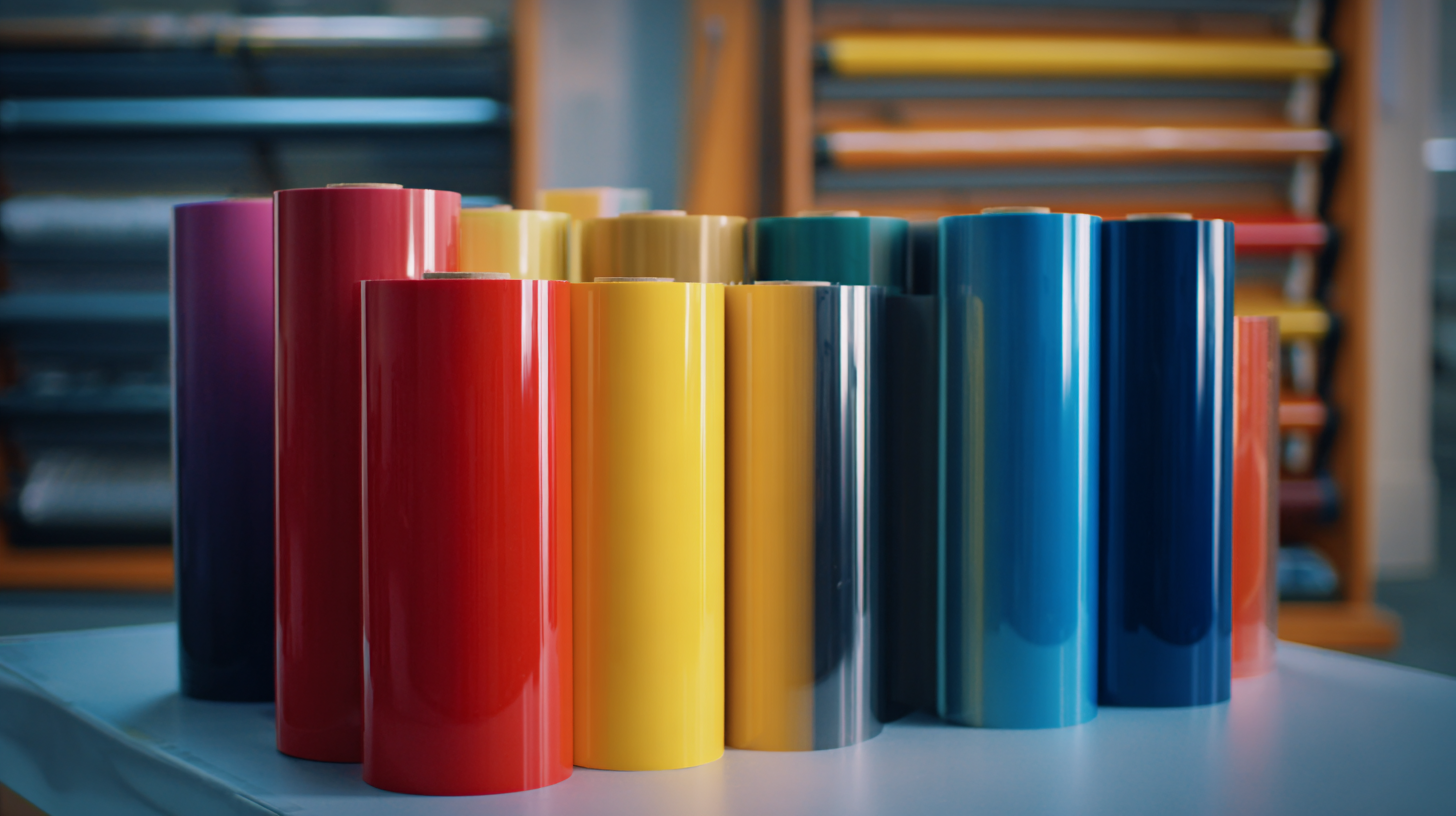How to Choose the Right Paint Film for Your Next Project
Selecting the appropriate paint film for your next project is crucial for achieving desired and lasting results. According to the latest industry reports, the global paint and coatings market is projected to grow to $238.3 billion by 2026, largely driven by innovations in paint film technology and increased demand for high-performance coatings. With various types of paint films available, including water-based, solvent-based, and specialized formulations for specific applications, the decision can be overwhelming. Research indicates that the right choice can enhance durability, improve aesthetic appeal, and provide protection against environmental factors. As consumers and professionals prioritize factors like sustainability and longevity, understanding the characteristics and benefits of different paint films becomes essential for making informed decisions. This guide aims to simplify the selection process and empower you to choose the paint film that best suits your project needs.

Understanding Different Types of Paint Films and Their Uses
Choosing the right paint film for your project is essential to achieving the desired finish and durability. There are several types of paint films available, each with distinct properties and uses. For example, latex paint, which accounts for over 70% of the residential paint market according to the latest data from the Paint and Coatings Industry, is known for its ease of application and quick drying time. This makes it ideal for interior walls, where a smooth finish is required, and ongoing rework is expected.

On the other hand, oil-based paint films, while less popular due to drying times and environmental concerns, provide a hard, glossy finish that is particularly suitable for high-traffic areas and surfaces that require frequent cleaning. They are often used on trim, cabinets, and exterior surfaces that endure harsh weather conditions. According to a report by the American Coatings Association, the rising trend of eco-friendly paints is pushing manufacturers to innovate water-based oil alternatives, bridging the gap between performance and environmental responsibility. Understanding these paint film types and their specific applications will help you make an informed decision for your next project.
Key Factors to Consider When Selecting Paint Film for Your Project
Choosing the right paint film for your project involves several key factors that can significantly impact both the application process and the final result. One of the most critical aspects to consider is the film type, which often falls into categories such as water-based, oil-based, and acrylic paints. According to the 2022 Paint and Coatings Industry report, water-based paints have gained prevalence due to their lower VOC emissions and ease of cleanup, accounting for over 60% of the market share.
Another important consideration is the environment in which the paint will be applied. Factors such as humidity, temperature, and the surface being painted can influence the performance of the paint film. For example, a study by the American Coatings Association indicates that high humidity environments can lead to longer drying times and potential adhesion issues. Additionally, understanding the specific needs of your substrate—whether it’s wood, metal, or drywall—can help in selecting a paint film that offers optimal adhesion and durability. This tailored approach not only enhances the aesthetic outcome but can also extend the longevity of the paint job.
Comparative Analysis: Water-Based vs. Oil-Based Paint Films
When choosing the right paint film for your next project, understanding the differences between
water-based and
oil-based paint films is crucial. According to a report by the American Coatings Association, the market demand for water-based paints has been steadily increasing, accounting for roughly 70% of the total paint market in recent years. This shift can be attributed to their low volatile organic compound (VOC) levels, making them a healthier choice for indoor applications. Water-based paints typically dry faster, allow for easier cleaning, and provide a more flexible finish, which helps prevent cracking and peeling over time.
In contrast, oil-based paint films still hold significant merit, particularly in
durability and
finish quality. The Paint Quality Institute reports that oil-based paints tend to provide a smoother and glossier finish, making them ideal for trim, cabinets, and high-traffic areas where longevity is essential. However, their longer drying times and higher VOC emissions can deter some consumers. Ultimately, the choice between water-based and oil-based paint films should reflect the specific requirements of your project, including the surface being painted and the desired finish, while also considering
environmental impacts and personal health.
Tips for Achieving the Best Finish with Your Chosen Paint Film
When embarking on a painting project, the choice of paint film is crucial to achieving a stunning finish. The right film not only enhances the appearance but also affects the durability and maintenance of the painted surface. To ensure the best results, it's essential to consider specific tips that align with your chosen paint film.
First, always assess the characteristics of the paint film you are using. For example, if you are working with a satin finish, it is advisable to use a quality primer that complements this type. This will help in achieving a smooth base, which is essential for a flawless application. Additionally, when applying the paint, maintain a consistent stroke pattern and avoid over-brushing to prevent visibility of brush strokes.
Another important tip is to pay attention to environmental factors such as humidity and temperature. These elements can significantly influence the drying time and adhesion of the paint film. Painting in optimal conditions—typically between 50°F and 85°F with low humidity—will help ensure that your finish is smooth and even. Always allow adequate drying time between coats to achieve a professional-level finish.
How to Choose the Right Paint Film for Your Next Project
| Paint Film Type |
Durability |
Best Use |
Finish Type |
Application Method |
| Acrylic Paint |
Moderately Durable |
Interior & Exterior Walls |
Matte, Satin, Gloss |
Brush, Roller, Spray |
| Oil-Based Paint |
Highly Durable |
Trim, Molding, Furniture |
Gloss, Semi-Gloss |
Brush, Spray |
| Chalk Paint |
Moderately Durable |
Furniture, Crafts |
Matte |
Brush, Spray |
| Enamel Paint |
Very Durable |
Doors, Cabinets, Radiators |
Glossy, Semi-Gloss |
Brush, Roller, Spray |
| Spray Paint |
Varies by Type |
Arts & Crafts, Quick Touch-Ups |
Varies |
Spray Can |
Common Mistakes to Avoid When Choosing Paint Films for Various Surfaces
When selecting the right paint film for your next project, avoiding common mistakes is crucial to achieving the best results. One frequent error is not evaluating the surface properly before making a selection. According to a recent industry report, using the wrong type of paint for specific surfaces can lead to issues such as peeling and poor adhesion. For example, latex paint typically performs well on drywall, but oil-based options are more suitable for trim and cabinets.
Failing to consider these differences can compromise the longevity of your project.

Additionally, many DIY enthusiasts overlook the importance of finish type. A report from a home improvement study highlights that 80% of homeowners choose sheen based on aesthetics rather than functionality. Gloss and semi-gloss finishes are more durable and easier to clean, making them ideal for high-traffic areas and kitchens. On the other hand, matte finishes, while visually appealing, may not hold up as well in certain environments.
Therefore, understanding the interplay between surface type, paint film, and finish can significantly enhance your painting outcome and even save you from costly redo projects later.

Home
Products
Paint Protection Film
TPU Color PPF
Window Tint
1Ply Primary Film
2Ply Primary Film
2Ply Korean Primary Film
Nano Ceramic Film
Inorganic Nano Ceramic High Insulation Film
Skincare Nano Ceramic Film
5G HD Hot Melt Film
Magnetron Heat Reflection Film
Titanium Nitride Optical Film
Titanium Nitride HD Magnetron Metal Film
Titanium Nitride HD Skincare Film
4mil 99% Safety Film Series
2mil 99% High Insulation King Series
Constant Color High Insulation Film
Constant Color Window Film
Chameleon Window Film
3mil Windshield Film
Headlight Film
Sunroof Film
About Us
Video
News
Blog
Contact Us








